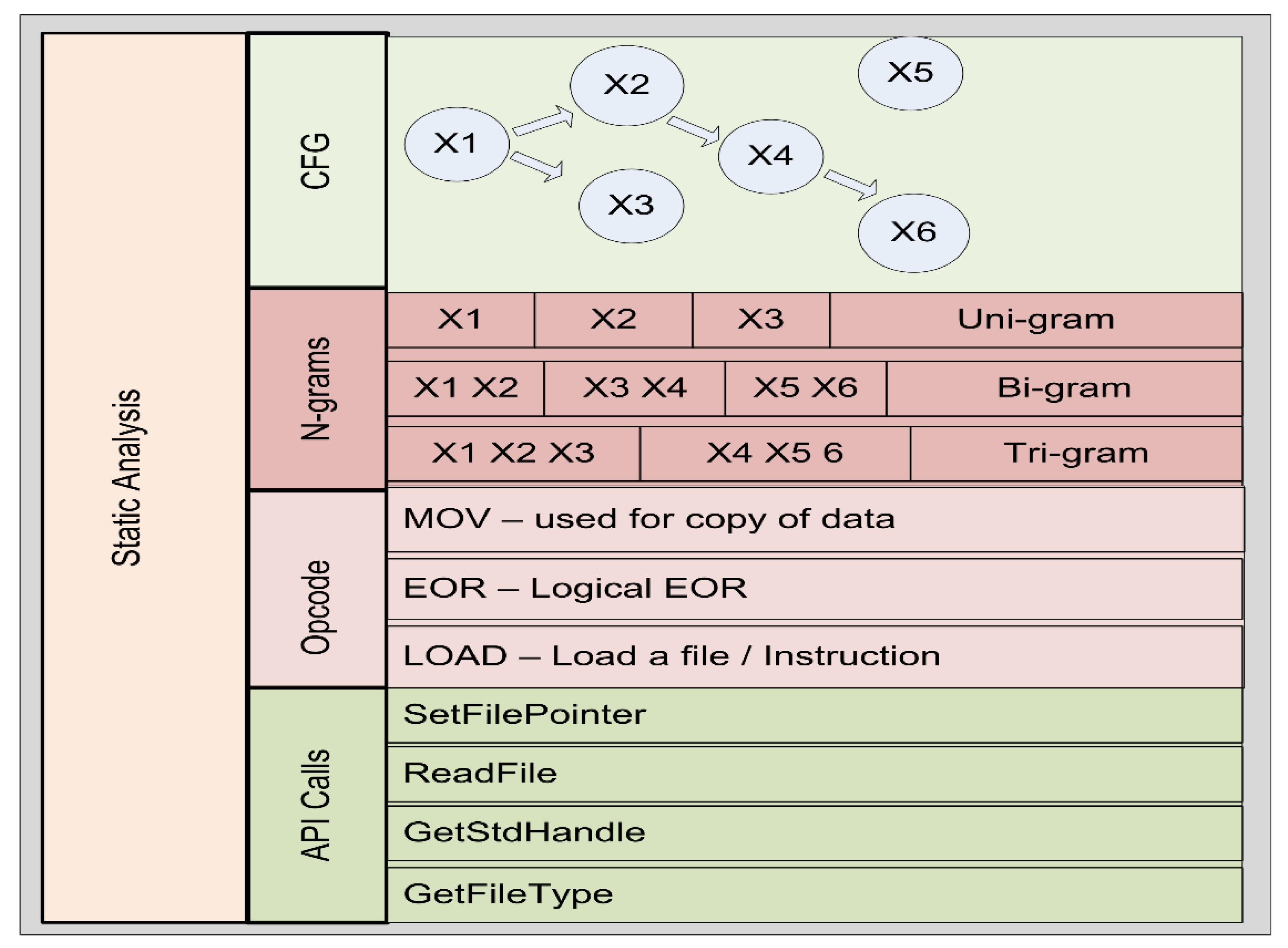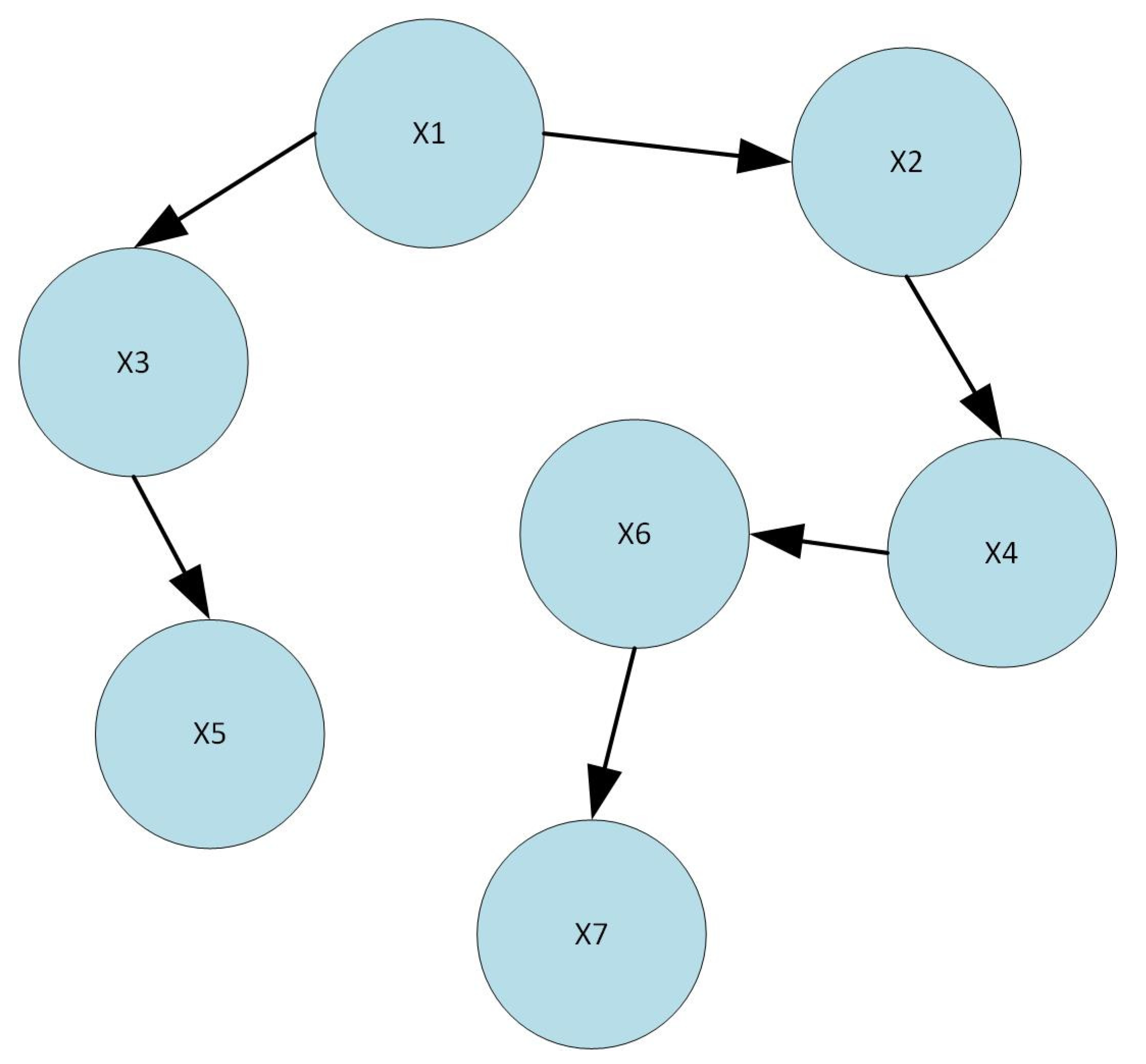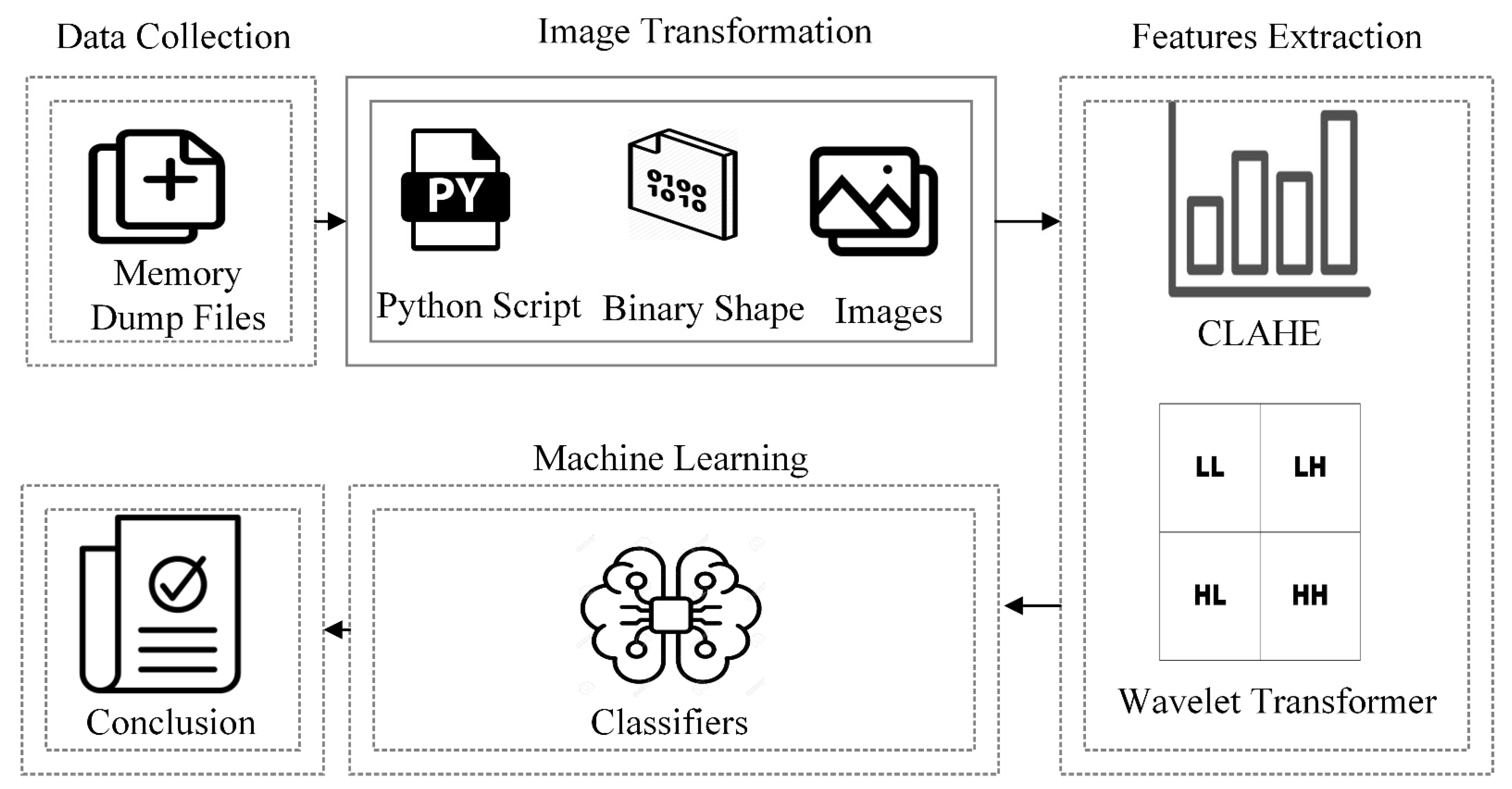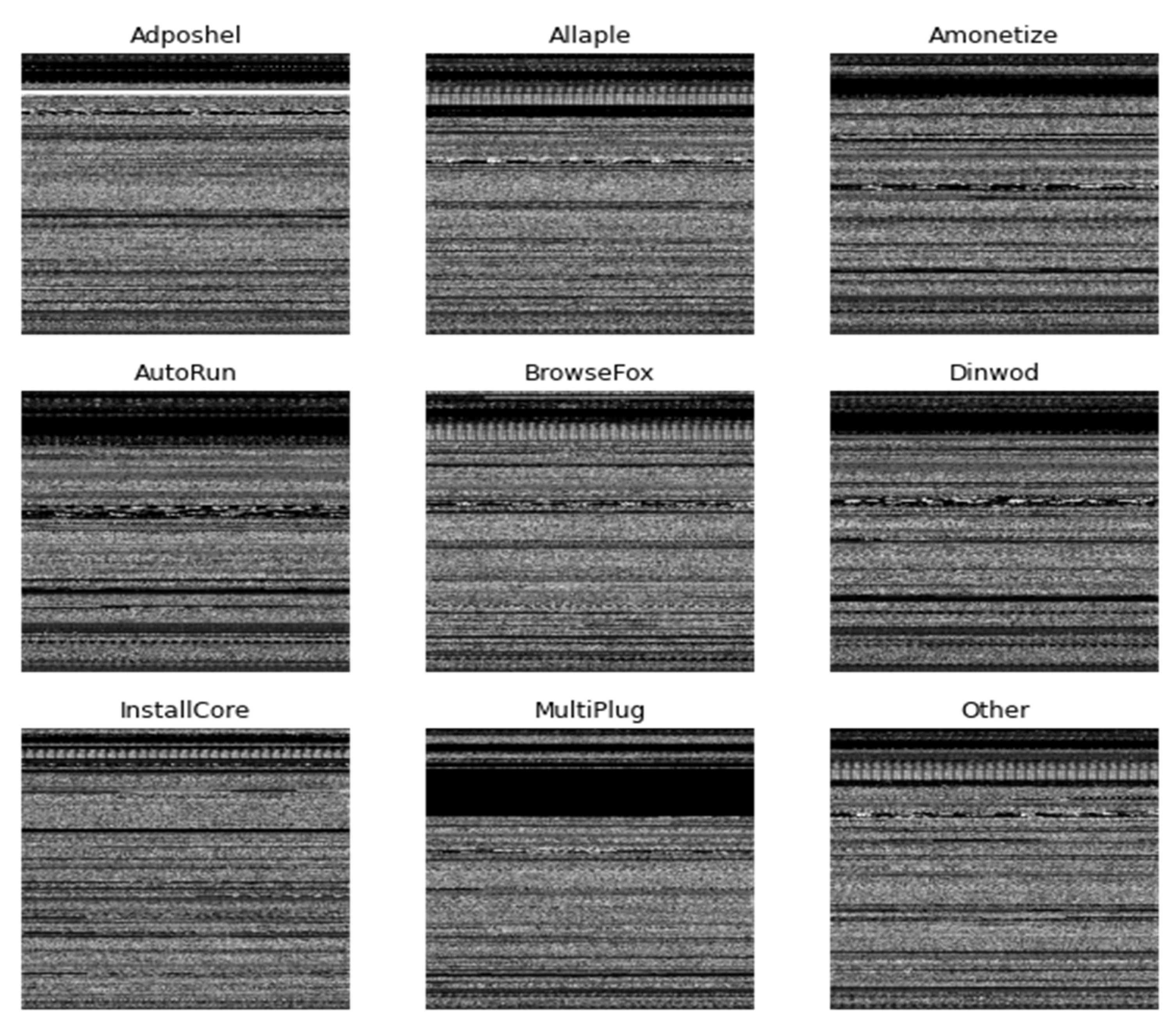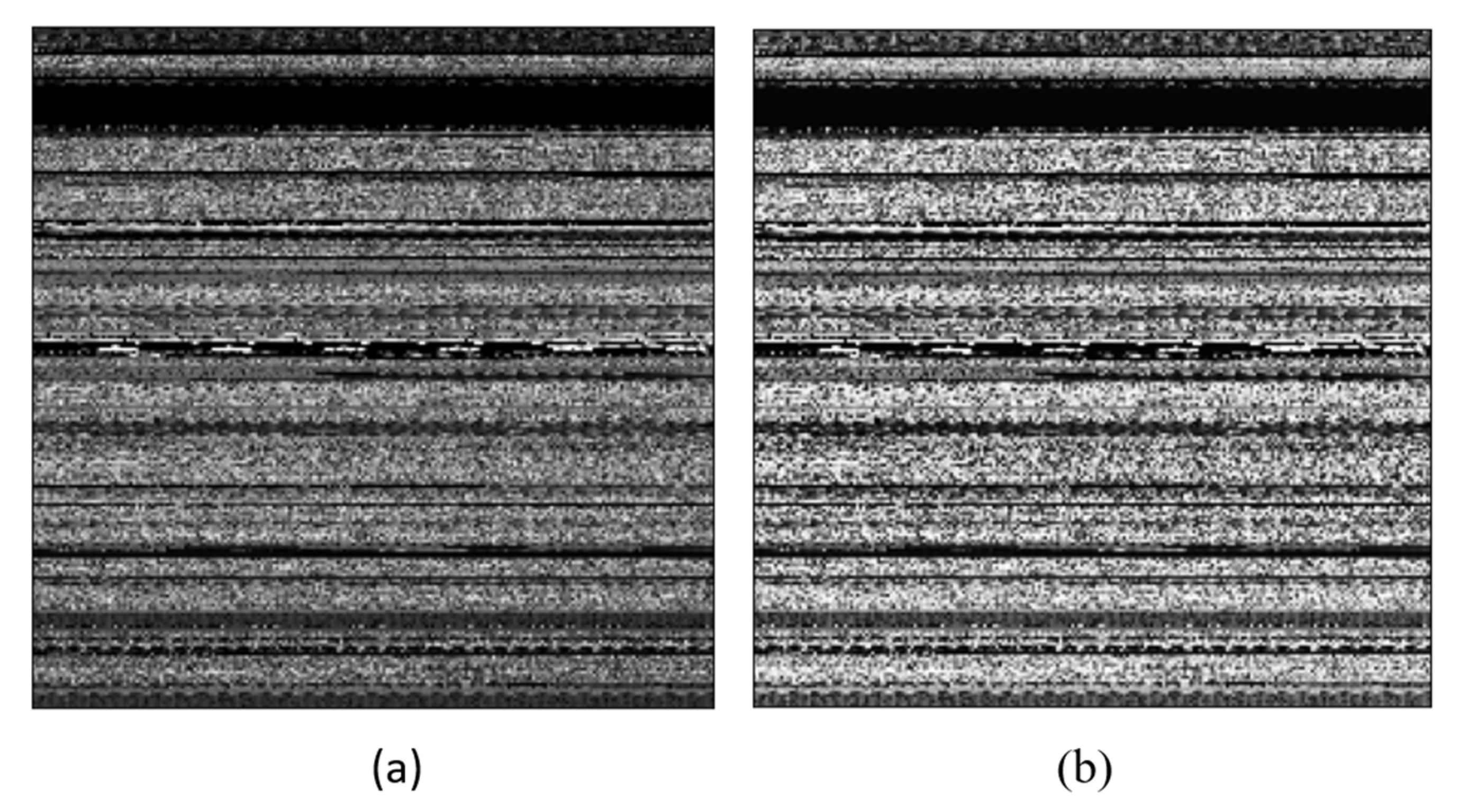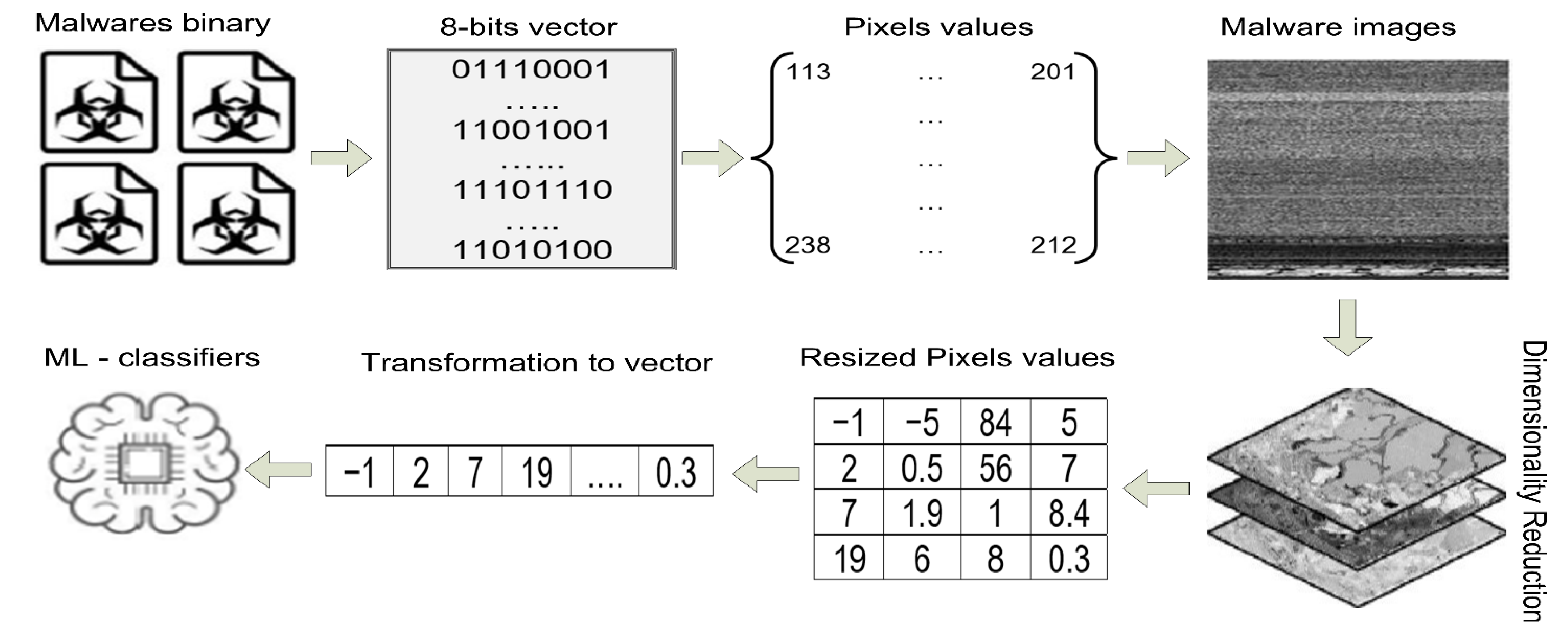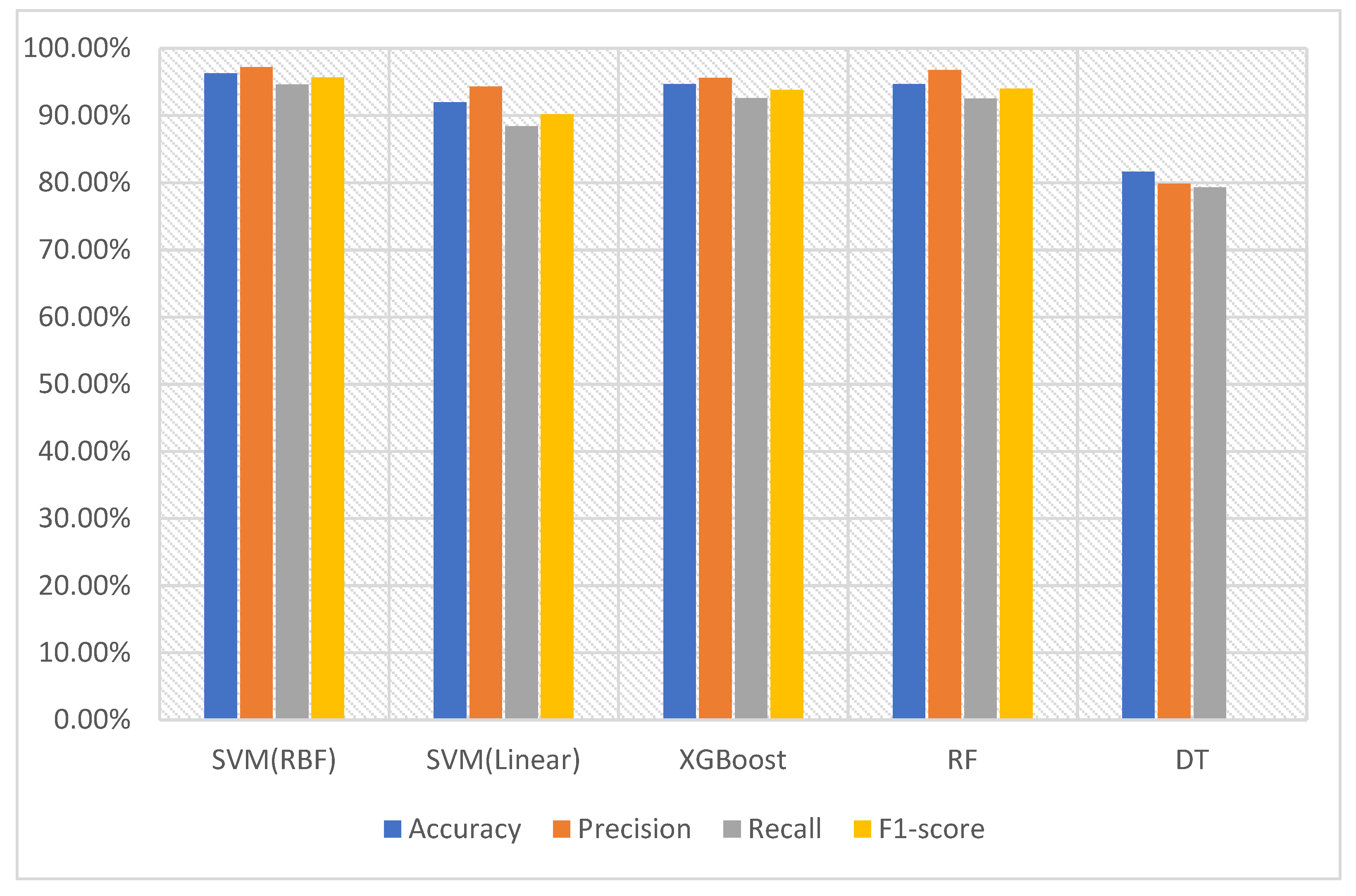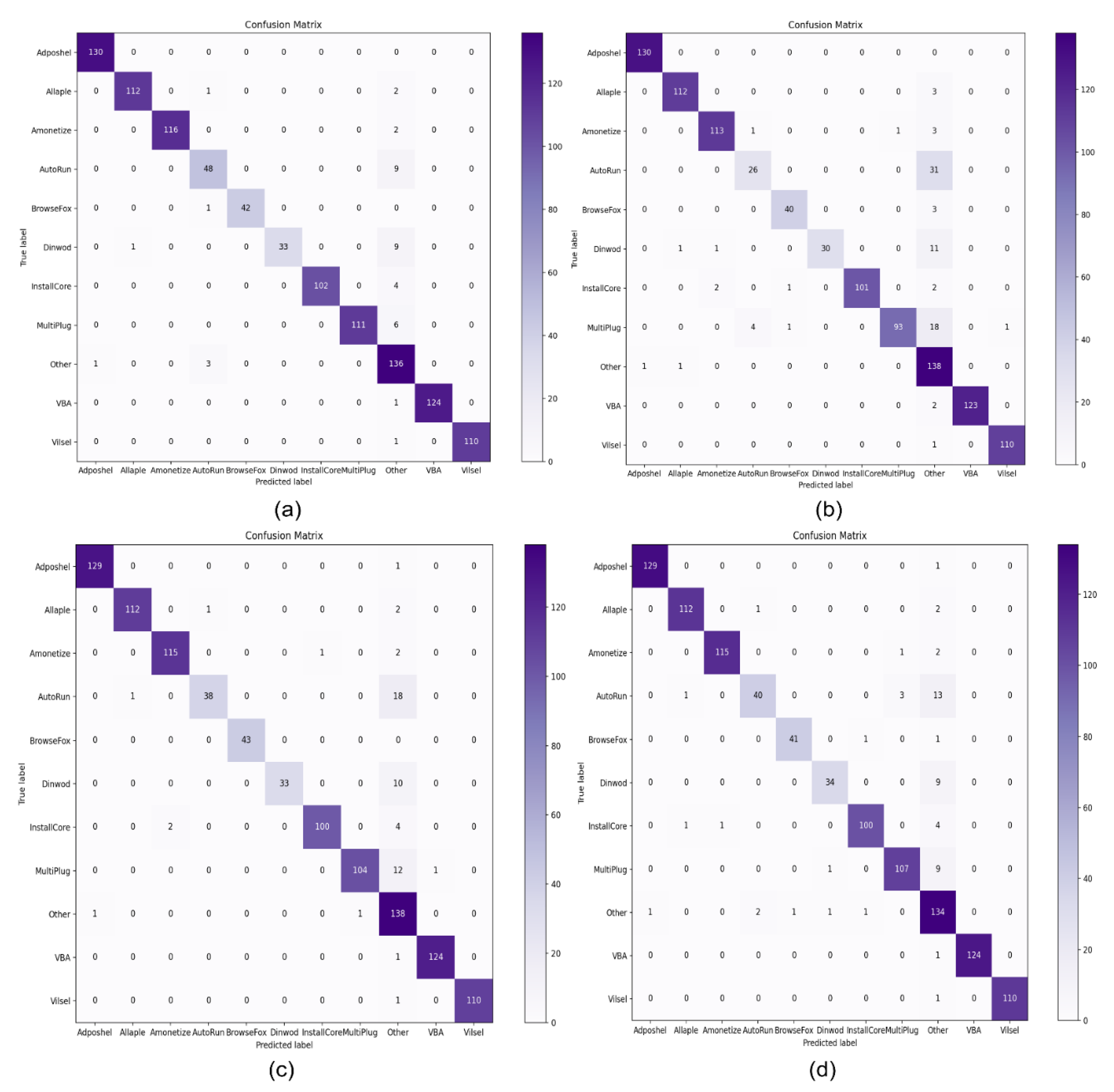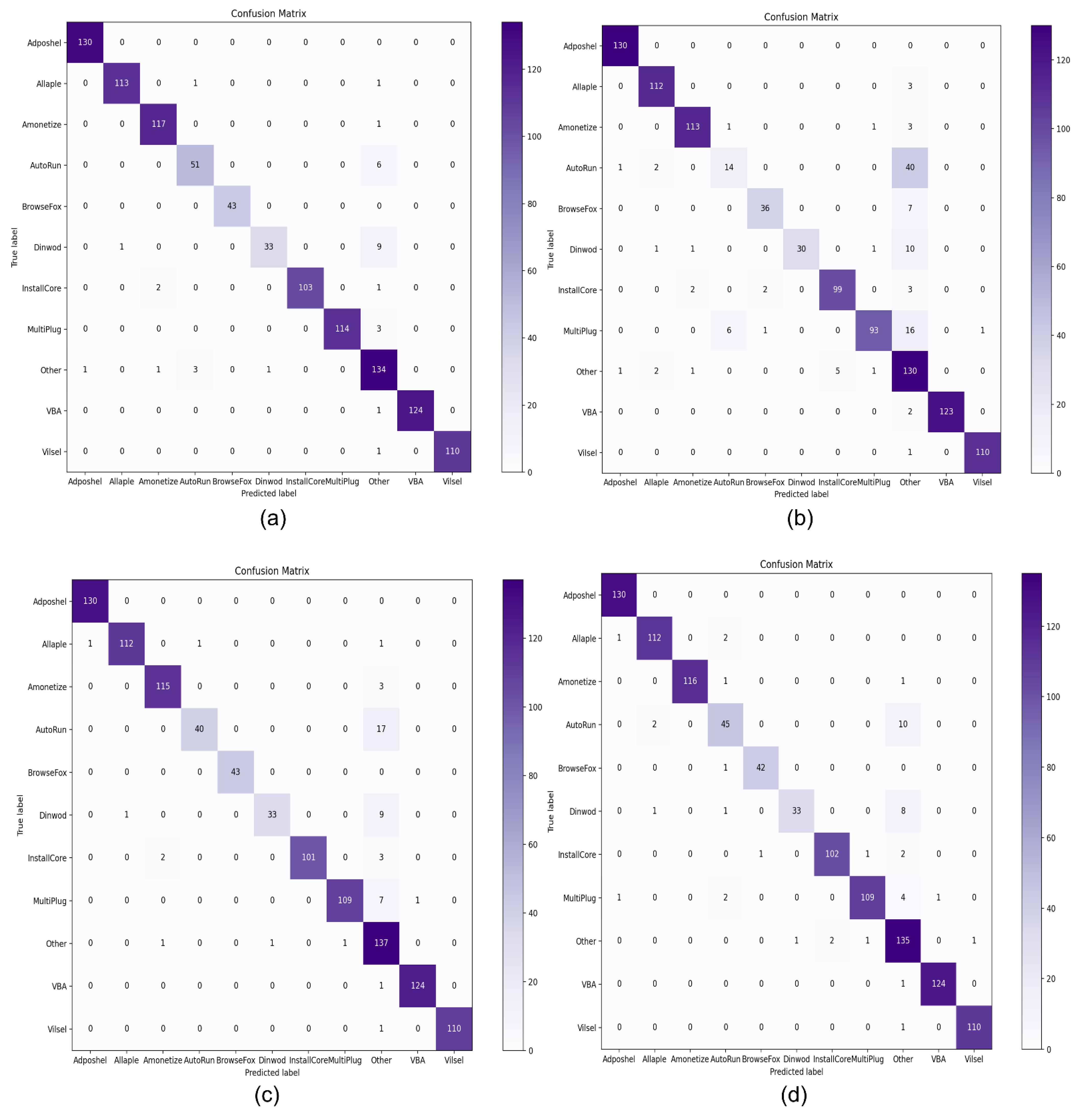1. Introduction
Malware refers to malicious software, script, or binary code that performs malicious activities on systems to compromise the confidentiality, integrity, and availability of data. When malicious software compromises sensitive information/data without the knowledge or consent of the owner, confidentiality is lost. Availability is compromised when the malware causes information to become unavailable. Server unavailability or network infrastructure failure may make the data unavailable to end-users. Integrity is compromised when information is altered. In some instances, malware not only steals information, but also modifies it by inserting malicious code and waiting for the optimal moment to attack. Malware developers are consistently improving their techniques and building new strategies to bypass security controls.
Malware poses one of the most significant security threats to computer systems, and its timely detection and removal are vital for protecting them. Many free and commercial tools are available to generate variants of malware [
1]. There are two types of malware: metamorphic and polymorphic. With each iteration, metamorphic malware is rewritten to create a new unique version. The changes in code make it difficult for signature-based antivirus software to recognize the same malicious program in different iterations. Despite the permanent changes to code, metamorphic malware functions in the same way. The longer that a given malware stays on a computer, the greater the number of iterations that it produces, making it more difficult for antivirus programs to detect, quarantine, and disinfect it. Polymorphic viruses are sophisticated file infectors that can modify themselves to avoid detection while maintaining the same basic routines. Polymorphic viruses encrypt their codes and use different encryption keys for each infection to vary the physical makeup of their files. They use mutation engines to change their decryption routines each time they infect a machine. Traditional security solutions such as signature-based, may not be able to detect them because they do not use static code. Complex mutation engines that generate billions of decryption routines make them even more difficult to detect. Polymorphic viruses are typically spread via spam, infected websites, and other malware. Notable polymorphic viruses include URSNIF, VOBFUS, VIRLOCK, and UPolyX or BAGLE. Polymorphic viruses are more dangerous when combined with other malicious routines. Both metamorphic and polymorphic types of malware increase the cost of analysis and can easily bypass anti-malware tools, such as antivirus applications [
2].
A recent report claimed that cybercrime is up by 600% due to the COVID-19 pandemic [
3]. Considering the alarming increase in security threats, novel approaches to defending against these attacks are crucial. According to AV-TEST, 99.71 million instances of malware were discovered in 2012 and more than 1.2 billion in 2021 [
4]. The same report claimed that the Windows Operating System is a more frequent target of attacks than macOS, Linux, and Android. Another report claimed that the total global cost of malware attacks increased from USD 500 billion in 2015 to USD 6 trillion in 2021 [
5].
Malware analysis is the process of examining the behavior of malicious software. It aims to understand how the malware operates and to determine the best methods for detecting and removing it. This entails analyzing the suspect binary in a secure environment to ascertain its characteristics and functionality and to develop robust defenses for the network. The primary goal of malware analysis is to extract meaningful information from a malware sample. The aim is to ascertain the capability of the malware, identify it, and contain it. It can also be used to identify recognizable patterns to treat and prevent future infections. There are many approaches to analyze a file, such as static, dynamic, and memory-based analyses.
Static analysis is the examination of a binary file without execution. It is the simplest method that allows for the extraction of metadata associated with the suspect binary. While the static analysis may not reveal all the necessary information, it can occasionally reveal interesting data that can help determine where to focus in the subsequent analysis. This quick analytical technique can be used to identify known malware with a low false-positive rate (FPR) [
6]. However, it is unsuitable for use on unknown malware because the recorded signature may not recognize them even if only minor changes have been made to the code. This renders it unproductive and inflexible.
Dynamic analysis can be used to overcome these issues. In such analysis, the malware is executed in isolation or in a virtual environment (sandbox) to analyze the logs of its runtime behaviors [
7]. The rate of malware detection using dynamic analysis is higher than that of static analysis, hence it can be used to understand the malware design better.
The dynamic approach does not translate the binary file into the assembly as the static analysis does. However, the intruder can use many techniques to fool the disassembler tool or program [
8]. The dynamic analysis uses system calls, memory modification, registry modification, and network information [
9]. Its drawbacks include, but are not limited to, an inability to identify disguised processes and behavior, privilege escalation, and nested virtualization [
8]. The common tools for dynamic analysis include IDA Pro, Lida, Peview, PeStudio, Process Explorer, TDIMon, RegMon, and Wireshark [
10]. Recently developed techniques use a memory-based analysis of malware/benign files. This technique is also referred to as memory analysis or memory forensics. The aim is to understand the behavior of malicious files or programs in a computer’s volatile memory. It can be used, for instance, to identify suspicious hidden processes in memory, such as logic bombs [
6]. In this approach, the entire volatile memory (RAM) of the victim computer system is dumped for analysis [
9]. The log obtained through this approach contains runtime-specific information, such as a list of running processes, active users, open network connections, and registry information [
11].
Many researchers have proposed a visualization analysis [
12] of malware detection that negates the need for domain expertise to manually extract the artifacts [
13]. In such an approach, malicious files are converted into images [
14,
15], and the dimensions of the resulting images vary based on the sizes of the malware files [
16]. The literature review presents two types of image channels: a grayscale image [
14,
17,
18] with a single channel and an RGB image [
15,
16] with three channels. Various dimensionality reduction and feature extraction techniques are used to reduce the size of malware images and to extract their pertinent characteristics. However, these techniques are either inefficient at extracting important features or computationally expensive, or memory intensive.
This paper presents a new technique for malware detection based on memory-based analysis and computer vision by using machine learning. The malware files are executed in a controlled virtual environment, and the data in memory are dumped into dmp files that are then converted into RGB images in PNG format. The Contrast Limited Adaptive Histogram Equalization (CLAHE) equalization technique is used to reduce noise and localize the contrast values of pixels in the images [
19,
20]. The wavelet transform [
21,
22,
23] is used to compress the images without losing the essential features for levels 1 and 2 that provide two versions of the dataset of images, consisting of images containing 112 pixels and 56 pixels. Finally, both versions of the dataset are fed into machine learning classifiers for training and testing. We compared our model with other machine learning algorithms to assess its performance.
The main contributions of this work are in two folds:
A new technique that prepares malware datasets with efficient and significant features with the following novelty steps:
- ○
An efficient technique that eliminates noise in images.
- ○
A memory-efficient technique that reduces images size without compromising its sensitive information.
Identification of the best machine learning classifiers that return the optimized and best performance based on the prepared datasets.
The remainder of this paper is organized as follows:
Section 2 discusses related work in the area,
Section 3 presents the methodology,
Section 4 details its implementation and the results, and
Section 5 provides the conclusions of this paper as well as directions for future research.
2. Background and Related Work
Machine learning and deep learning techniques have been used extensively to detect malware. Understanding the most critical features of malware files is essential for training any model to identify them. The patterns or behaviors of these malicious files need to be examined to gain information related to the intentions of the malware developer.
A signature is the characteristic footprint or pattern of a malicious attack on a computer network or system. This pattern can be a file or a byte sequence of network traffic. It can also be the unauthorized execution of software, network access, directory access, or the use of network privileges. Signature-based detection is a popular method for detecting software threats, including viruses, malware, worms, and trojans. Antivirus manufacturers use this method to create an appropriate signature of malware files and compare it with known suspicious files. This method is beneficial because it is quick and accurate [
24]. Programs/tools such as PeStudio, Process Hacker, Process Monitor, ProcDt, and X64dbg are used for the static analysis of malicious files. It is important to understand the portable executable (PE) structure of the malicious file to effectively use these tools. The PE file format includes a Disk Operating System (DOS) header, DOS stub, PE file header, section tables, PE section, and transport layer security (TLS) section.
Figure 1 shows the structure of the PE format used in 32-bit and 64-bit versions of Microsoft Windows.
The DOS header begins with 64 bytes for any PE file. This section reveals the extension of a particular file. An error message such as “This program cannot be run in DOS mode” appears on the screen when the DOS stub is used. Extra information, such as the size and location of the code can be found in the PE header. Other subsections include the Signature, NumberOfSections, SizeOfOptionHeader, SizeOfRawData, and PointerToRawData. The sections provide a logical and physical distinction between the various components and help load the executable file into memory during execution. They contain information on the Dynamic Link Library (DLL) and other metadata.
The structure of the PE file is analyzed to pull informative features from it. The static analysis uses a variety of approaches for analyzing and extracting such characteristics, including Application Programming Interface (API) calls, control flow graphs, n-grams, and operation code (opcode) [
25].
Figure 2 shows the approaches to static analysis.
An API is software that enables two unrelated applications to communicate with each other. It functions as a bridge that accepts requests or messages from one application and delivers them to another by interpreting them and enforcing protocols in accordance with the given specifications. It links everything together and ensures that software systems operate in sync. APIs are often transparent to users and provide a plethora of options for software applications. They operate by allowing restricted access to a subset of the software’s functionality and data. This enables developers to access a particular program, piece of hardware, data, or application without requiring access to the complete system code.
Table 1 presents a collection of commonly used Windows-based APIs and their descriptions.
A control flow graph (CFG) is a graphical depiction of the several pathways that the code of a computer program may follow. A CFG is composed of a sequence of symbols called nodes that are linked by arrows that indicate the path taken by each node to reach the next one. Each node represents a single line or a group of lines of crucial computer code. Regardless of the mechanism used to generate a CFG, they are always read in the same way: A CFG resembles a flowchart. Creating it serves a variety of critical purposes, one of which is to determine if any portion of the computer program is useless. This can be determined by the control flow diagram and is a simple operation. Any node that is not connected to the rest of the nodes by an arrow is suitable for deletion. In addition, when program execution is restricted to a single node, a CFG can be used to help isolate problems, such as infinite loops. The condition that needs to be satisfied is to move to the node to which each arrow point is represented by an arrow on the diagram. As a consequence, situations in which this requirement is never satisfied can be recognized because the program cycles back to the previous node. A CFG may also be used for the development of a software dependency graph. This graph illustrates the interdependence of several components of a program and is used to ensure that the program code is run in the correct order.
Figure 3 shows a general view of a program or application flow controlled by the CFG, where X1 through X7 are the names of the nodes, and it has values. These nodes are used in conjunction with conditional statements such as IF, IF-ELSE, WHILE, etc. Such a procedure always begins at X1 and advances until the condition is met. It is faster than other approaches to static analysis for analyzing file behavior [
26].
X1–X7 represents nodes that are used in conjunction with conditional statements, such as IF, IF-ELSE, WHILE, etc. These conditional statements begin at X1 and advance until the condition is met.
The n-gram is another widely used approach to static analysis. An n-gram is a sequence of n consecutive elements in a text document. We can use words, numbers, symbols, and punctuation to create these items. Text classification, text generation, and sentiment analysis are all common uses of this method. When analyzing malware, the n-gram is used with an opcode, a string sequence, and a sequence of API calls. The n-gram keeps track of how many words exist in malware files. A variety of n-grams were used in the literature, e.g., unigram, bigram, trigram, four-gram, and five-gram.
The opcode-based approach to static analysis is a subset of a machine language instruction that specifies the operation to be performed. A program is defined more precisely as a sequence of organized assembly instructions. An instruction is a pair or list of operands consisting of an operational code and a list of operands. These operation codes, such as MOV, JUMP, PUSH, and POP, are often used to inspect a file and determine its behavior. In [
27], a deep learning-based convolutional recurrent neural network was used in conjunction with the opcode sequence to detect malware. The researchers had to shorten the extended opcode into a sequence to extract the opcode from suspect PE files.
Dynamic analysis can be used to view the malicious file at multiple levels of detail. At a low level, we monitored the binary code, whereas changes to the registry or file system are examined at a high level [
25]. In contrast to static analysis, which examines the binary code, patterns, and signatures of malicious files, dynamic analysis examines file behavior. Malware developers continually try to find new ways to evade detection or incorrectly classify their intent. At least 10 methods of attack are typically employed by malware developers in each sample [
28], which is why malware analysts must be aware of these evasive techniques [
29]. Feature extraction relies primarily on domain expertise and is conducted manually. The features are extracted by collecting all events, including API calls, network logs, and registry information. Various combinations of approaches, such as API + DLLs, API + summary information, DLL + Registry, Registry, DLLs, API calls, and Registry + summary information + DLLs + API, are used to enhance malware detection [
30].
Approaches to malware analysis based on memory analysis have become popular in the last two years. This approach is efficient and precise at detecting and classifying malware. Two critical phases are involved in implementing a memory forensics-based analysis. Memory acquisition is the first, where researchers attempt to execute suspicious files in a simulated control environment and then dump the volatile memory by using a free or a commercial tool (Memoryze, FastDump, Dumpit) [
31]. In the second phase, the dump file is analyzed by using Volatility and Rekall tools. The domain-specific characteristics are manually extracted.
Memory Analysis/Memory Forensics
In [
17], the researchers illustrated how files from a computer’s memory dump could be used as a heuristic environment for malware detection. This approach examines the registry activity, imported libraries, and API function calls in three features of memory images. The researchers in [
17] examined the performance of the technique for malware detection after evaluating the significance of each feature. The method achieved an accuracy of 96% by using a support vector machine-based model fitted to data on the registry activity.
In [
32], the researchers demonstrated forensics by using memory dumps and static malware analysis. Malware that conceals its behavior or artifacts can be discovered by using this approach. Static analysis was used to decrypt and pack malware samples in order to identify hidden activity. The authors categorized 90% of the data as within the required limits and claimed that their approach could be used in a variety of strategies to increase the rate of detection.
In [
33], researchers provide novel solutions to problems, such as user-mode/kernel-mode rootkits, calling undocumented functions, calling native functions that are not hooked, and custom WinAPI function implementation. The authors contributed to the trigger-based memory analysis approach, which automatically used exciting events to take memory dumps in the system. Security researchers can thus obtain comprehensive information on executables. Combined with other techniques of memory analysis, this method can improve security and provide helpful information on malware.
Similarly, the researchers in [
34] proposed a trustworthy and safe architecture for detecting malware on virtual machines in the private cloud of an organization. The authors obtained safe and trustworthy volatile memory dumps from a virtual machine (VM) and used the minhash technique to examine the data in them. This approach was assessed in a series of increasingly demanding tests that also tested the efficacy of several classifiers (similarity-based and machine learning based) on real-world malware and legitimate apps. The authors claimed that the proposed framework could identify known, new, and unknown malware with an extremely high TPR (100% for ransomware and RATs) and very low FPR (1.8% percent for ransomware and 0% for RATs).
In [
35], the researchers introduced a sandbox design by using memory forensics-based techniques to provide an agentless sandbox solution independent of the VM hypervisor. It leveraged the introspection method of the VM to monitor malware running memory-related data outside the VM and analyzed its system behaviors, such as the process, file, registry, and network activities. The authors evaluated the feasibility of this method by using 20 advanced and eight script-based malware samples. They demonstrated how to analyze malware behavior in memory and verified the results by using three types of sandboxes. The results showed that this approach could be used to analyze suspicious malware activities, which is helpful for cyber security.
In [
36], the researchers presented a sample malware memory dump-based technique developed by using an API trigger-based memory dump. They updated the Cuckoo sandbox to implement it. The API trigger was replaced with a hooking approach in Cuckoo. This means that API calls and memory dumps were always synchronized. The authors claimed that because the encrypted IP address was stored in memory, it was possible to retrieve the plain text and identify hidden information before it was hidden again by the malware.
In [
37], the researchers provided a strategy to detect malware that uses forensics-based techniques to recover malicious artifacts from memory and combines them with data obtained during malware execution in real time. They also applied feature engineering techniques before training and testing the dataset on machine learning models. Following the implementation of the SVM, the results showed a significant improvement in terms of accuracy (98.5%) and the false-positive rate (1.7%). The authors claimed that the limitations of dynamic analysis could be circumvented by including important memory artifacts that reveal the true intent underlying malicious files.
In [
6], the researchers demonstrated a memory forensics-based approach for extracting memory-based features to facilitate the detection and classification of malware. The authors claimed that the extracted features could be used to reveal the behavior of the malware, including the DLL and process injection, communication with command and control, and gaining privileges to perform specified tasks. They used feature engineering to transform the features into binary vectors before training and testing the classifiers. The experimental results showed that this approach could achieve a classification accuracy of 98.5% and a false positive rate of 1.24% when the SVM classifier was used. The authors also constructed a memory-based dataset with 2502 malware files and 966 benign samples and made this publicly available for future research.
In [
38], the researchers proposed three strategies to prevent the memory space of malevolent users from being exposed to tools of analysis. Two of these tactics, page table entries and structures that handle the user’s memory, also require elevated privileges. The third makes use of shared memory but does not completely create and test all approaches to the Windows and Linux operating systems to demonstrate the viability of the strategy. The authors provided two Rekall plugins to automate the finding of shared memory.
In [
30], the researchers provided a technique for memory imaging and pattern extraction from suspicious data. The authors claimed that malware samples from the same families have comparable 3D patterns of memory access defined by the sequence of access relative to the sequence of computing instructions, the instruction address, and the memory location accessed. This technique was tested on datasets of malicious and benign software. The results showed that comparable malware samples could be recognized by using memory images.
In [
9], the researchers proposed criteria for signature matching and string pattern matching for the YARA scanner to detect malicious programs in RAM dumps. In order to save time, a GUI-based automated forensics toolkit was used instead of the command-line technique of the volatile memory forensic toolkit for analyzing processes. The RAM image is inspected using a built-in program to detect and remove possibly dangerous apps. According to the study, malware forensics can be applied to the recorded processes to delve into the origins of the attack and determine the specific cause.
In [
31], the researchers combined the VMI, memory forensics analysis (MFA), and machine learning at the hypervisor to form an enhanced VMM-based guest-assisted A-IntExt introspection system. They used the VMI to inspect digital artifacts from a live guest OS to obtain a semantic perspective on the processes. The proposed A-IntExt system includes an intelligent cross-view analyzer (ICVA) that scans VMI data to discover hidden, dead, and suspicious processes while anticipating indications of early malware execution on the guest OS. Machine learning algorithms were used to identify malicious executables in the MFA-based executables. The A-IntExt system was tested by running a large number of malware and benign executables on the live guest OS. It obtained an accuracy of 99.55% and an FPR of 0.004% when detecting unknown malware on a generated dataset. The A-IntExt system exceeded real-world malware detection at the VMM by over 6.3%.
Similarly, in [
16], the researchers proposed a technique for detecting malware that involves collecting the memory dumps of suspicious programs and converting them to an RGB image. First, the authors described the proposed approach. Unlike past research, they sought to gather and exploit memory-related data to form visual patterns that can be identified by using computer vision and machine learning algorithms in a multi-class open-set recognition regime. Second, they used a state-of-the-art manifold learning approach called UMAP to improve the accuracy of malware identification by using binary classification. They tested the method on a dataset of 4294 samples containing ten malware families and benign executables. Finally, GIST and HOG (histogram of gradients) descriptors were used to create their signatures (feature vectors). The collected signatures were categorized by using j48, the RBF kernel-based SMO, random forest, XGBoost, and linear SVM. The method yielded an accuracy of 96.39% by using the SMO algorithm on feature vectors based on GIST + HOG. The authors also used a UMAP-based manifold learning technique to increase the accuracy of detection of unknown malware by average values of 12.93%, 21.83%, and 20.78% for the random forest, linear SVM, and XGBoost algorithms, respectively.
4. Implementation and Results
The details of the hardware used in the experiment are provided in
Table 6. The Python v3.7 programming interface and all required library packages such as numpy, pandas, matplotlib, CV2, and pyWavelets were installed. The experiments were conducted without unique settings or hyper-tuning. A Python script was created and executed to convert the memory dump files of the computer into images. The image transformation process took two days. The size of the files used during the memory analysis rendered the processing of certain files significantly slower than the others. This is due to the number of services and processes run by various malicious files.
The image transformation yielded images of various classes with a variety of dimensions. We resized all images to 224 × 224 grayscale pixels by using the computer vision library without interpolation. The values of the grayscale images range from 0 to 255. A computer vision library was used to implement CLAHE on all images (CV2). Following this, we observed a slight shift in the pixel values of the images. Extremely dark pixels (0) became lighter while extremely bright pixels (255) became dark gray, indicating noise. The pywt module of Python was used to access features of the wavelet transform. All images were compressed to different levels throughout the process. We executed levels 1 and 2 of the wavelet transform on images with dimensions of 112 × 112 and 56 × 56, respectively. Hereinafter, we refer to these two tiers of datasets as version 1 and version 2, respectively. The files from the memory dump belonging to malware and benign programs are classified accordingly. We used five well-known machine learning classifiers: SVM with RBF, SVM with linear, RF, XGBoost, and the decision tree. The experiment began by training the machine learning classifiers on version 1 of the dataset. The same procedure was then used with version 2. The results of both versions were compared, and the performance of the best classifier was compared with the results of methods proposed in past work.
4.1. Notations and Preliminaries
In the past, accuracy as a performance metric was frequently used to evaluate any technique; however, this increases the likelihood of overfitting. We evaluated the technique based on its precision, recall, and F1-score. The ratio of true positives to the sum of true positives and false positives defines precision. It quantifies the number of false positives incorporated into the sample. If no false positives (FPs) occur, the model has an accuracy of 100%. The more FPs are added to the mix, the more imprecise the outcome. The positive and negative numbers from a confusion matrix were required to determine the accuracy of the model. Precision was calculated as follows:
Rather than focusing on the number of false positives predicted by the model, recall considers the number of false negatives in the results of the prediction. The recall rate is penalized when a false negative is predicted because the penalties for precision and recall are the opposite. It is expressed as follows:
The F1-score balances the accuracy and recall rate. The closer the F1-score is to 1, the better the classification. It is expressed as follows:
The confusion matrix was used to assess the performance of any given classification. It is an N × N matrix used to evaluate the performance of a classification model, where N is the number of target classes. The matrix compares values predicted by the model with the target values. It provides a comprehensive perspective on the performance of a classification model and the kinds of mistakes made.
4.2. Implementation and Results
In order to feed data into the machine learning classifiers, we converted version 1 of the dataset of images into feature vectors. They were input to the SVM with RBF and the SVM with the linear kernel, XGBoost, RF, and DT. The SVM with the RBF kernel was able to recognize and classify the malware with an accuracy of 96.28%. Its scores of precision, recall, and F1-score were 97.17%, 94.62%, and 95.66%, respectively. This indicates that the SVM with the RBF kernel obtained a sufficient amount of information from the feature vectors to be able to differentiate between the malware and benign data. RF delivered the second-best performance with an accuracy of 94.66%, precision of 96.75%, recall of 94.50%, and F1-score of 94.02%. The results obtained using the version 1 dataset are depicted in
Table 7 and
Figure 10.
Figure 11 illustrates the confusion matrixes of the top four machine learning classifiers, including SVM with RBF, SVM with Linear, RF, XGBoost and DT. Among them is the SVM with the RBF classifier to highlight its performance in terms of identifying malware and benign software.
Figure 11a shows that among the various malware classes, “Adposhel” achieved a 100% correct result, while “Dinwod” performed slightly worse, with a 95% classification rate. The proposed technique accurately classified benign images, as shown in the part of the diagram marked “other”. The use of CLAHE and wavelet transform for noise reduction and image compression enabled us to extract a sufficient number of useful features to successfully distinguish between the classes.
We also evaluated the performance of the best classifier in terms of the precision–recall curve (PRC). It illustrates the tradeoff between precision and recall when the threshold is changed. A large area under the curve indicates good recall and precision when the rates of false positives and false negatives are low. The higher the scores are, the more accurate the classifier (high precision), and the greater the number of positive results that it returns (high recall).
Figure 12 depicts the results of the SVM with the RBF kernel classifier on various families of malware. The highest precision and recall values on version 1 are obtained for class 0 (Adposhel), with inferior performance on class 3 (AutoRun) and class 5 (Dinwod), and it is most probably due to the unbalanced dataset. We are optimistic about improving the performance of those worse malware family classes if applied to a balanced dataset. The overall value of the area of the PRC for various malware classes shows that the proposed technique worked well even on unbalanced datasets.
Memory utilization and time consumption during training are critical considerations in evaluating a given model or technique. We used a Python script to determine the computer’s memory utilization logs and the time taken for training. During the training phase, the SVM with the RBF kernel used 4090.3 MB of system memory and took 586 s. The XGBoost classifier consumed 3927.1 MB and took 519 s, whereas the DT had the lowest memory utilization and the shortest training time of 3880.0 MB and 72 s, respectively.
Table 8 exhibits the experimental outcomes in terms of memory usage for all machine learning classifiers during training.
In the next experiment, we used version 2 of the dataset of memory-related images with dimensions of 56 × 56. The experiment was conducted with the same settings and classifiers. The SVM with the RBF kernel achieved the highest accuracy of 97.01%. The RF classifier, which delivered the second-best performance in terms of accuracy on version 1 of the dataset, now has lower accuracy, indicating that it did not obtain a sufficient amount of information to discriminate between different classes of malware. The XGBoost classifier achieved the second-highest accuracy of 95.74%. The performance of the classifiers is shown in
Table 9 and
Figure 13 to be 97.36%
We used the confusion matrix of the top four machine learning classifiers in order to evaluate the performance of version 2 of the dataset. Among all machine learning classifiers, SVM with RBF kernel successfully classified various malware classes.
Figure 14a shows its overall performance on various classes of malware. It attained the highest accuracy on the “Adposhel” class of malware, with a classification rate of 100%, but delivered slightly worse results on “Dinwod”. As shown in
Figure 14a–d, the “AutoRun” class obtained the most confusing of the various confusion matrices of machine learning classifiers.
As shown in
Figure 15, we used the PRC to determine how well the SVM with the RBF kernel performed on unbalanced classes of the dataset with fewer dimensions. When compared to version 1 of the dataset result, our technique improved almost classes of malware, such as class 3 (AutoRun), class 4 (BrowseFox), class 5 (Dinwod), class 6 (InstallCore), class 7 (MultiPlug), class 8 (other), class 9 (VBA), and class 10 (Vilsel). It was discovered that the wavelet transformer technique is capable of appropriately transforming non-stationary image signals and achieving both good frequency resolution for low-frequency images and high temporal resolution for high-frequency components.
Finally, we evaluated our classifiers in terms of memory utilization and time consumption during training.
Table 10 displays the overall memory usage during the training process. The SVM with the RBF kernel once again delivered the best performance, such as lower memory utilization from 4090.3 MB to 2667 MB and a training time from 586 s to 74 s without compromising the efficiency.
The proposed technique that uses CLAHE and the wavelet transform is able to reduce or eliminate noise in all memory-related images. It is also able to significantly compress the images to increase the accuracy of the SVM classifier while reducing the memory consumption and the cost of training the system. Our proposed method used images with 56 × 56 pixels, which is a significantly smaller size than what was considered in past studies. Finally, we compared the overall results of the proposed method with the state-of-the-art work reported in [
14,
15,
16,
18], as shown in
Table 11. The authors of [
14] used GIST descriptors in conjunction with machine learning methods, while those of [
18] applied HOG descriptors through a multi-layer perceptron model. Similarly, the authors of [
15] recommended the use of deep convolutional neural networks via the VGG16 architecture, whereas the research in [
16] utilized a combination of GIST and HOG for feature selection. A downside of GIST is that it divides images into parts by using a spatial grid [
41], whereas the accuracy of HOG is unreliable due to its processing speed during object detection. The proposed technique relies on feature selection by using CLAHE and the wavelet transform. To compare our approach with the above methods, we used accuracy, precision, recall, and the F1-score as performance criteria. Our findings show that the proposed method outperformed all the others on each of the metrics, such as accuracy and precision. It is also able to identify elements in images with the smallest dimensions.
We compared the proposed method with the best classifiers on both datasets to evaluate its performance in terms of memory usage and training time and found that it delivered significant improvements in both. The SVM with the RBF kernel achieved the best performance on both versions of the dataset, and thus we compared its memory usage and training time/cost.
Figure 16 shows that the use of CLAHE and the wavelet transform helped reduce memory utilization and training time.

